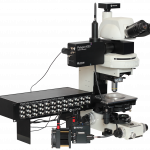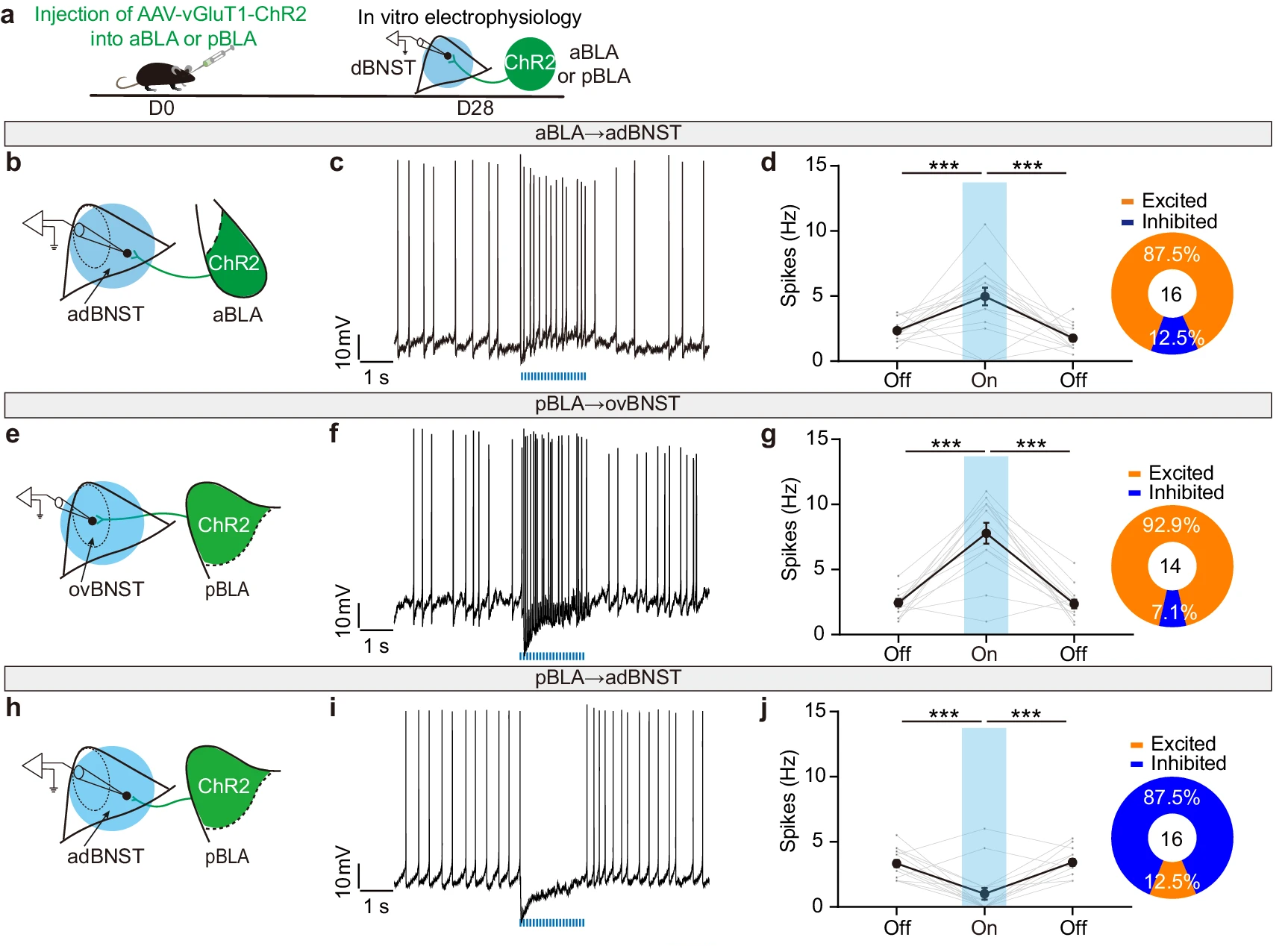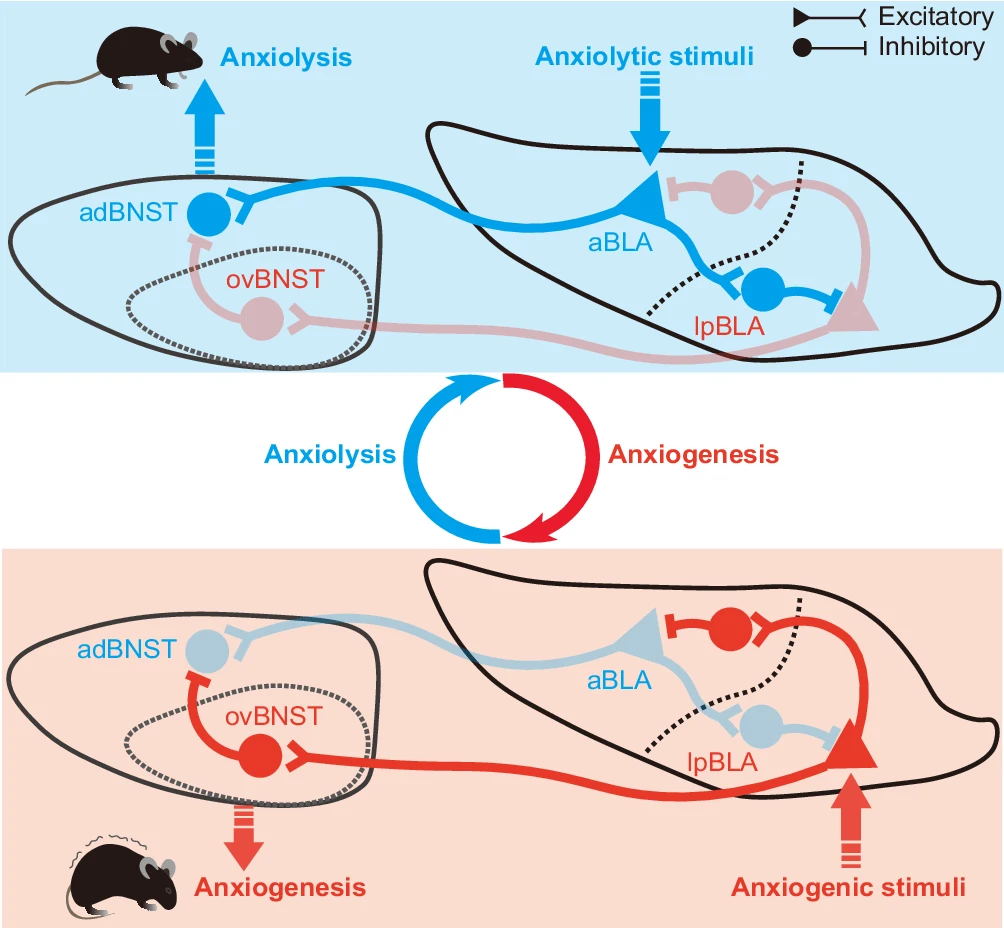
Synergism between two BLA-to-BNST pathways for appropriate expression of anxiety-like behaviors in male mice
Published on 2024/07/26 Research powered by Mightex’s Polygon1000 
 Han, R. W., Zhang, Z. Y., Jiao, C., Hu, Z. Y., & Pan, B. X., Synergism between two BLA-to-BNST pathways for appropriate expression of anxiety-like behaviors in male mice, Nature Communications, 15(1), 3455 (2024).
Han, R. W., Zhang, Z. Y., Jiao, C., Hu, Z. Y., & Pan, B. X., Synergism between two BLA-to-BNST pathways for appropriate expression of anxiety-like behaviors in male mice, Nature Communications, 15(1), 3455 (2024).

Introduction
Adapting to a dynamic environment necessitates the capacity to generate suitable emotional and behavioural responses, which relies on the coordination of diverse brain regions that are anatomically interconnected and functionally relevant. Anxiety, as a common negative mood, emerges in response to possible threats and uncertainties (Calhoon and Tye, 2015; Craske and Stein, 2016).
We live in dynamic environments that require us to react to stimuli around us in appropriate ways by generating reactive emotional and behavioural responses (Han et al., 2024). Our emotions are underpinned by multiple complex neural circuits that modify mood and behaviour in agile ways (Tye, 2018). Anxiety is a common negative mood and emotion that emerges in response to possible threats and uncertainties.
Two key nodes in the circuitry that controls negative emotions, such as anxiety, are the basolateral amygdala (BLA) and the bed nucleus of stria terminalis (BNST; Tye, 2018; Luthi and Luscher, 2014). The BLA and BNST are connected by two distinct and functionally opposing pathways that allow anxiety-like behaviours to be expressed appropriately, in a context specific manner. How these parallel pathways and connected nuclei enable appropriate environmental-response and expression of anxiety like behaviours remains poorly understood.
Experiments
In order to elucidate the connectivity and synergism between BLA and BNST connections, Han and colleagues first labelled antero-posterior BLA-BNST projections using AAV-mediated fluorophores mCherry and eYFP. Immunohistological results showed that anterior and posterior BLA projections target different subregions of the dorsal BNST, with aBLA projection neurons targeting. These diverging projections are posited to have synergistic roles in modulating anxiety-like behaviours, due to posited their opposing actions on anterodorsal BNST neurons (adBNST) and oval BNST neurons (ovBNST).
The opposing roles of aBLA and pBLA projection neuron in the adBNST and ovBNST was then examined using whole cell patch clamp electrophysiology, combined with patterned optogenetics, using the Mightex Polygon (figure 1). As expected, activation of both aBLA and pBLA inputs increased the firing frequency of their main target cells in adBNST and ovBNST neurons, respectively. However, counter to predictions, pBLA input activation reduced the firing of the adBNST cells.

Figure 1: Spatial optogenetic targeting of adBNST and ovBNST projections from the aBLA and pBLA. Patterned optical stimulation provided using the Mightex Polygon.
In order to determine the behavioural implications of this BLA-BNST pathway divergence, Han and colleagues next conducted a series of behavioural paradigms designed to assess anxiety like behaviours in mice, while optogenetically exciting the mpBLA→adBNST projection. They found that during stimulation of the mpBLA→adBNST pathway, mice spent significantly more time in typically anxiogenic environments, such as the open arm of an elevated plus maze (EPM) and the center of an open field test (OFT). These results suggest that excitation of the mpBLA→adBNST projection reduces anxiety, as expected. Conversely, optogenetic activation of lpBLA→ovBNST attenuated time in the elevated plus maze open arm and the center of the open field arena (figure 2). These findings suggest that activation of this lpBLA→ovBNST pathway increased anxiety-like behaviours in mice.

Figure 2: Behavioural results showing optogenetic stimulation of BLA-BNST pathways have diverging effects on anxiety-like behaivours.
Conclusion

Figure 3: Proposed BLA – BNST circuitry underpinning anxiety-like behaviours in mice
In sum, the authors propose a model of coordinated, opposing anxiogenic and anxiolytic pathways from the BLA to the BNST (figure 3). The outlined experiments and result demonstrate the complementary responses of mpBLA-adBNST and lpBLA-ovBNST pathways in encoding anxiety-relevant context-related information.
These findings provide an important step forward in understanding how our emotions and behaviours are regulated in dynamic environments allowing us to produce appropriate responses. Furthermore, this work offers a putative circuit for further examination in disease states, where dysregulation of these two pathways may result in anxiety disorders.
Use of Polygon
The authors used the Mightex Polygon1000 in this publication to produce spatially targeted optogenetics in combination with slice electrophysiology in order to dissect the putative BLA→BNST neuronal pathways.
References:
Calhoon, G. G. & Tye, K. M. Resolving the neural circuits of anxiety. Nat. Neurosci. 18, 1394–1404 (2015).
Tye, K. M. Neural circuit motifs in valence processing. Neuron 100, 436–452 (2018).
Luthi, A. & Luscher, C. Pathological circuit function underlying addiction and anxiety disorders. Nat. Neurosci. 17, 1635–1643 (2014).
Craske,M. G. & Stein,M.B.Anxiety. Lancet 388, 3048–3059 (2016).
Catherine Thomas, PhD Senior Liaison and Development Scientist at Mightex
To read the full publication, please click here.